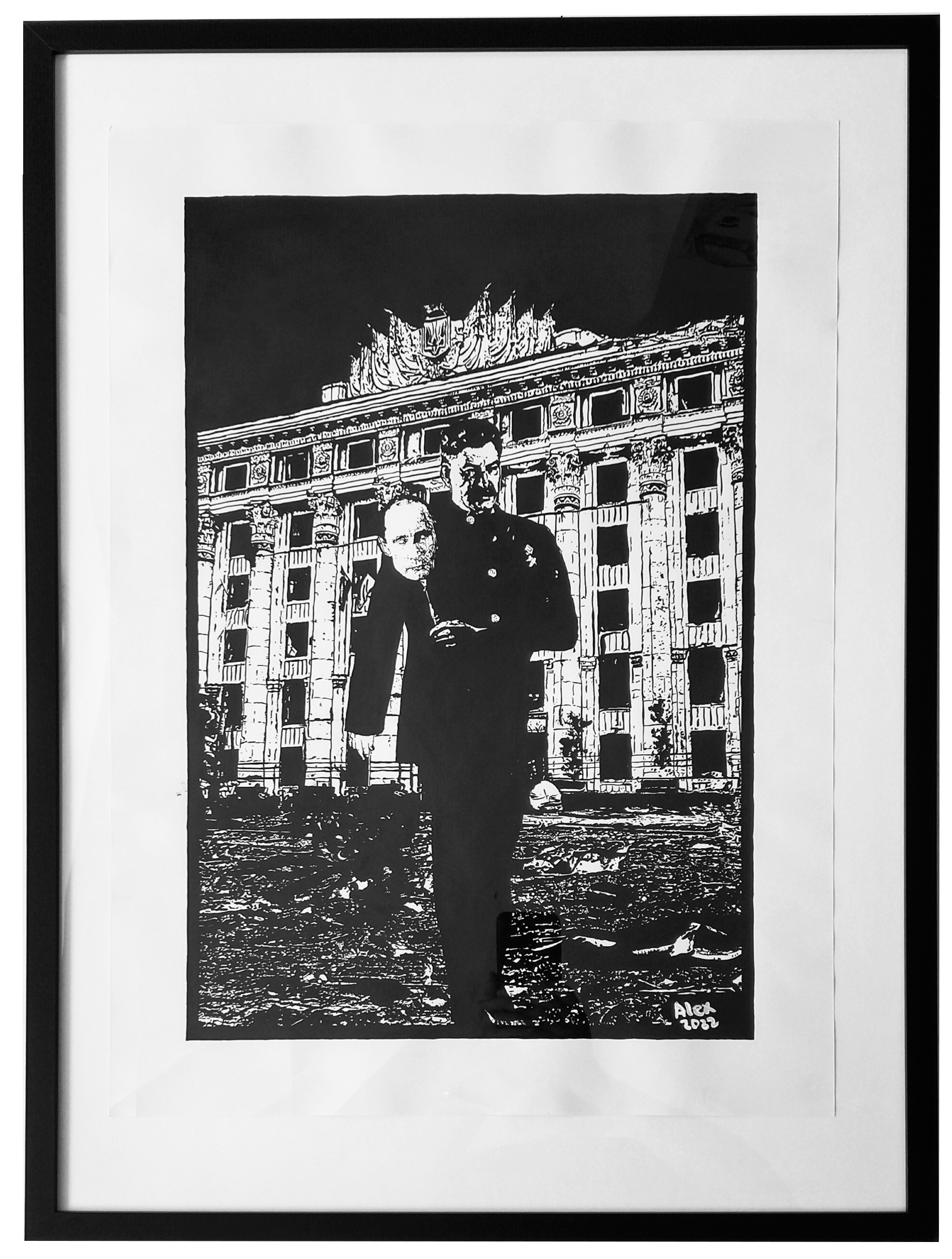“The fractured mask (Kharkiv, 2022)”, Alexandre Mitchell, 2022
(Canson, 180g, 42 x 59cm, Indian ink)
The current war in Ukraine is a reminder of the brutalities already carried out by Russian forces in the past. Between 1932 and 1933, Stalin was already determined to destroy Ukraine’s national identity and the country’s resistance movement, which he attributed to Ukrainian nationalists who themselves had a sordid past – 1.5 million Ukrainian Jews exterminated by the Nazis and their Ukrainian auxiliaries during World War II.
Stalin deported and executed millions of Ukrainians; he seized peasants’ crops and forced them to join collective farms. These measures quickly led to the Great Famine, known in Ukraine as Holodomor or ‘death by starvation’. Stalin had called it a ‘fairy tale’ and, to this day, Moscow still does not acknowledge this man-made famine, claiming that millions of men, women and children starved to death as a result of poor harvests.
Like Stalin, Putin is a tyrant who lies shamelessly to his people and the world, manipulates through fear and uses his military might to repress his own citizens as well as his enemies. The Soviet propaganda machine was incredibly effective in its day, but it pales in comparison to Putin’s control of social media and news, and his arsenal of state-sponsored hackers.
As the historian Simon Sebag Montefiore writes in a recent article,
‘Putin has now switched from authoritarian rule to totalitarian oppression. As this atrocious war and Western sanctions corrode Russian society, Stalinist terror will become essential to Putin’s hold on power.’‘
Further reading
- Applebaum, A., Red Famine: Stalin’s War on Ukraine, Knopf Doubleday Publishing Group, 2017.
- Graziosi, A., ‘Les Famines Soviétiques de 1931–1933 et le Holodomor Ukrainien’, Cahiers du monde russe et soviétique 46/3, 2005, pp. 453–472.
- Koshiw, I., Ram E., ‘Kharkiv catalogues war’s toll on its architectural gems’, The Guardian, 05/05/2022 | Online
- Montefiore, Simon Sebag, Stalin: The Court of the Red Tsar, New York, Alfre, 2003.
- Montefiore, Simon Sebag, ‘Why Vladimir Putin is beholden to Stalin’s legacy’ New Statesman 2022 | online




